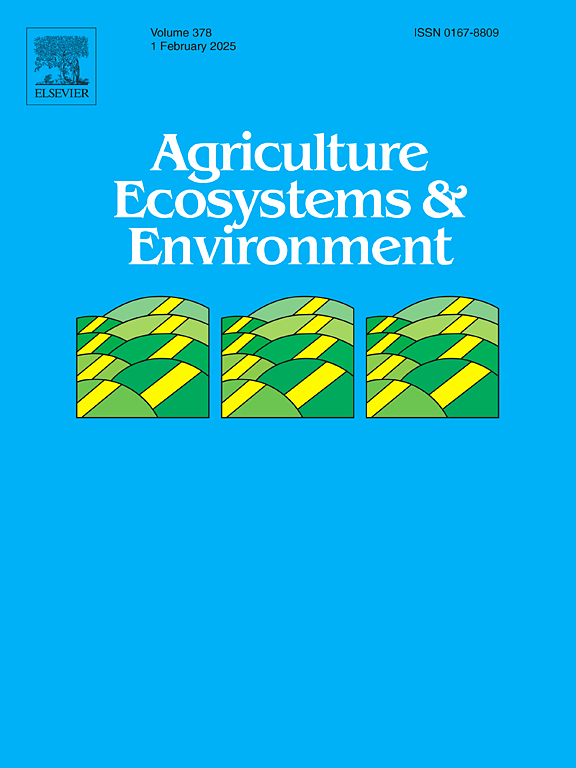Contrasting contributions of microbial and plant-derived C to soil carbon in desertified grassland restoration
IF 6
1区 农林科学
Q1 AGRICULTURE, MULTIDISCIPLINARY
引用次数: 0
Abstract
Grassland restoration can greatly increase soil organic carbon (SOC). However, the SOC dynamics and its compositional changes during grassland restoration are not fully understood. We investigated the relative contributions of microbial- and plant-derived C to SOC in both topsoil (0–10 cm) and subsoil (10–20 cm) over a 27-year restoration chronosequence in desertified grasslands, using resampling at the same site. We used amino sugars as biomarkers for microbial-derived C, and light fraction organic carbon (LFOC) and particulate organic carbon (POC) as indicators for plant-derived C. Grassland restoration increased SOC from 3.8 to 8.1 g kg−1 in topsoil and from 2.1 to 4.1 g kg−1 in subsoil. Concurrently, microbial necromass carbon (MNC), LFOC, and POC also increased in both soil layers. The proportion of SOC derived from MNC decreased as restoration progressed, while the contribution of LFOC increased, likely due to the continuous input of root biomass and litter after grazing exclusion. These findings support the emerging view that plant-derived C plays a key role in SOC accumulation during the later stages of grassland restoration. Thus, SOC appears less stable and more susceptible to disturbances as restoration progressed, indicating potential risks for C loss. Fungal necromass C was 2.4–2.9 times bacterial necromass C and contributed more to SOC. Random Forest models and correlation analyses revealed that Fe and Al oxides, LFOC, and the SOC/total phosphorus (TP) ratio were key regulators of microbial-derived C in topsoil. Plant-derived contribution to SOC depended primarily on total nitrogen, restoration duration, and TP. We conclude that both microbial- and plant-derived C increased during grassland restoration, but their relative contributions to SOC followed contrasting patterns. These varying C sources during restoration have important implications for SOC stability and vulnerability, and can guide future management strategies for optimizing C sequestration in dryland ecosystems.
求助全文
约1分钟内获得全文
求助全文
来源期刊

Agriculture, Ecosystems & Environment
环境科学-环境科学
CiteScore
11.70
自引率
9.10%
发文量
392
审稿时长
26 days
期刊介绍:
Agriculture, Ecosystems and Environment publishes scientific articles dealing with the interface between agroecosystems and the natural environment, specifically how agriculture influences the environment and how changes in that environment impact agroecosystems. Preference is given to papers from experimental and observational research at the field, system or landscape level, from studies that enhance our understanding of processes using data-based biophysical modelling, and papers that bridge scientific disciplines and integrate knowledge. All papers should be placed in an international or wide comparative context.
 求助内容:
求助内容: 应助结果提醒方式:
应助结果提醒方式:


